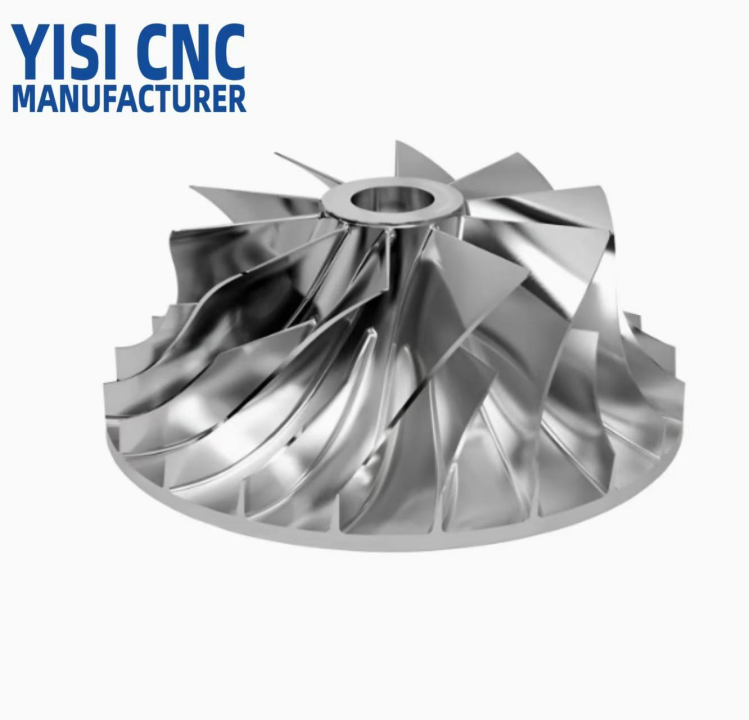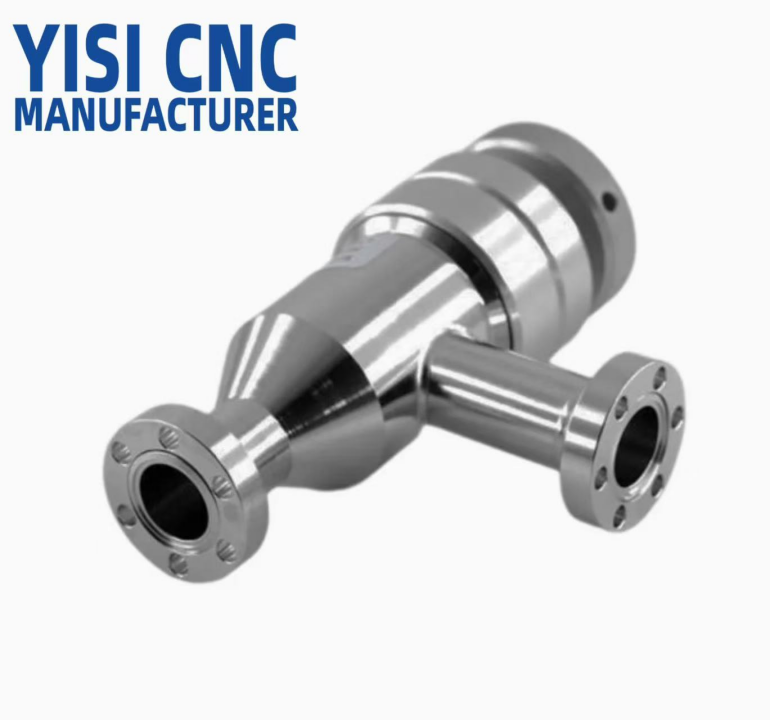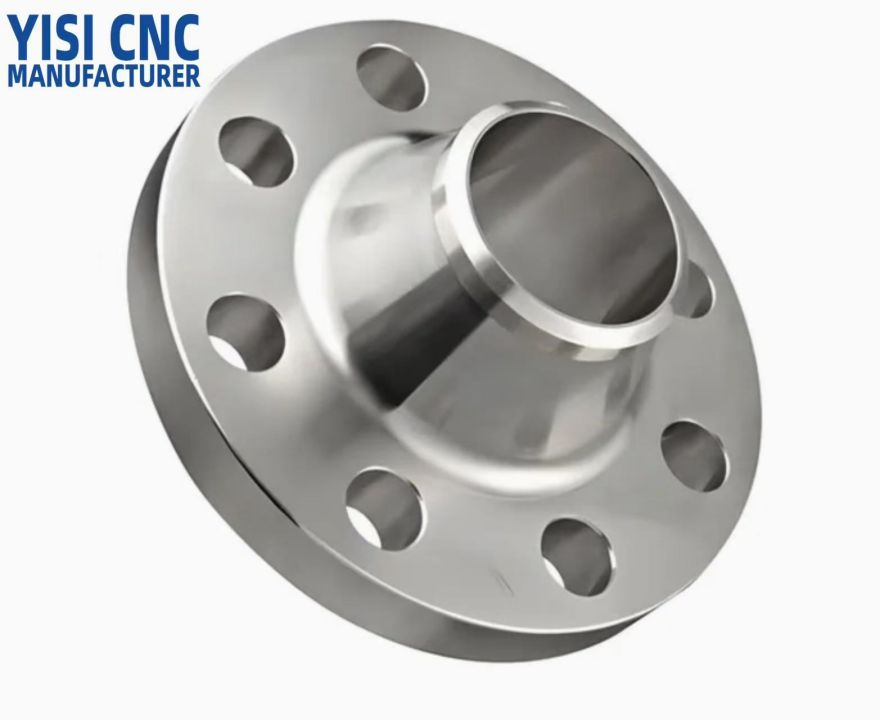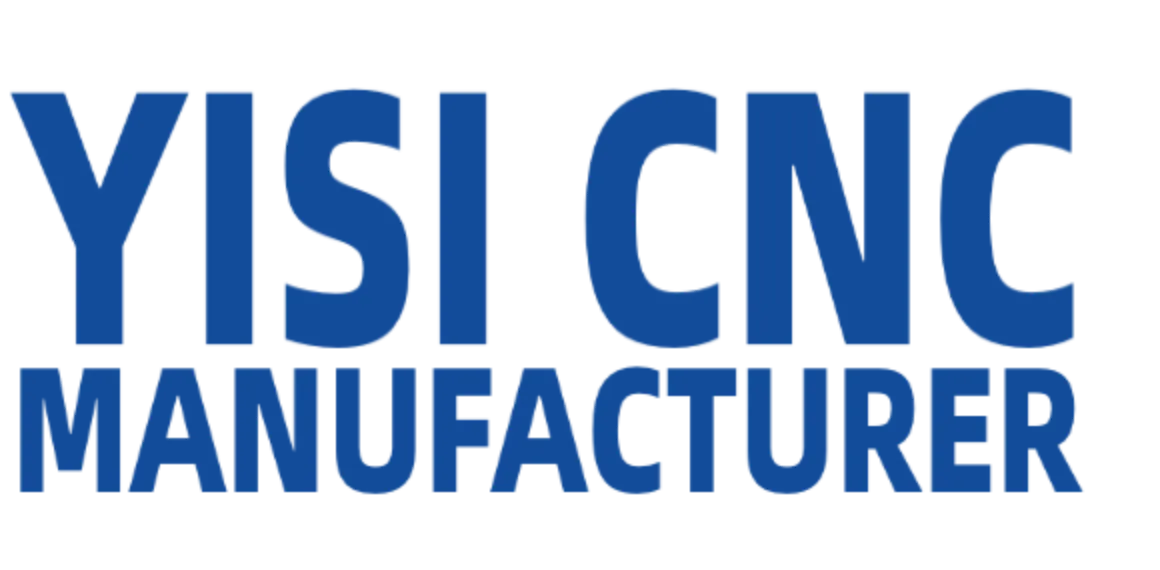5 Axis CNC Machining Services – Precision CNC Manufacturing Company with 5 Axis Machining Center
As an experienced and professional machine shop specialized in CNC manufacturing for many years, YiSi CNC (YISICNC.COM) is capable of precision 5 axis CNC machining services and 5 axis milling. Whether you are in need of high-quality and precise metal or plastic components, we can provide 5 axis machining parts to worldwide clients for a variety of industries including automotive, medical, military, aerospace, mechanical, machine tool, high-tech, and more, with excellent machining and programming skills, as well as 5 axis CNC machining center. Our engineers and machinists can perform true 5 axis machining services work and produce five axis machining parts with ease. No matter how complex the CNC machining parts, each step will be executed with a rigorous attitude, to deliver exceptional 5 axis machining components that demonstrate the highest quality standards. Even though any problems during the process, we’ll keep running the job and make adjustments until all the issues are addressed. If you require a well-established and cost-effective CNC machining company to take over your project, YiSi CNC can achieve your expectation.
5 Axis Machining vs 3+2 Machining
5-axis machining is different from 3+2-axis machining. 5-axis CNC milling or machining involves continuous adjustments of the cutting tool along all five axes to keep the tooltip optimally perpendicular to the part. While 3+2 machining, also known as 5-sided machining or 5-axis indexed, it’s actually a 3-axis program with the cutting tool fixed at an angle depending on the two rotational axes. 3+2 machining needs to stop and start between each tool reorientation, while 5 axis machining does not require that, so its speed is greatly improved. In addition, 5 axis CNC machining suits for more applications due to its stronger capacities. Generally, 3+2 machining works for plane processing and can’t complete oblique or special machining, while 5 axis machining center is suitable for various contour surface machining.
Materials for 5 Axis CNC Machining
Extensive experiences and outstanding capabilities enable us to manufacture 5-axis machined parts from various materials whether you need metal or plastic precision CNC parts. Please check out our material chart for 5-axis CNC machining. If there are no materials you want, contact us to talk about your requirements.
| Materials | Common Options | Features |
|---|---|---|
| Aluminum |
Al6061 Al7075 |
Lightweight, strong, corrosion resistance, good thermal conductivity, easy to machine. |
| Titanium | Ti-6Al-4V | High strength-to-weight ratio, corrosion resistance, and biocompatibility |
| Stainless Steel | 316L | Good corrosion resistance and durability |
| Copper Alloys | Brass and bronze | Electrical and thermal conductivity, ease of cutting |
| Plastics | PMMA, Polycarbonate | Versatility, impact resistance, and ease of machining |
Surface Finishes for 5 Axis CNC Machining
To achieve the best surface finish on our 5 axis machining parts, a variety of post-processing and surface finishing techniques can be applied.
| Surface Finish | Description |
|---|---|
| Bead blasting | Small glass beads or other abrasive materials are blasted at the surface of the part to remove burrs and create a uniform and matte finish. |
| Black oxide coating | Immerse the part in a hot oxidizing salt bath to create a black protective layer. |
| Passivation | Treat the part with an acid solution to remove any surface iron and create a protective oxide layer. |
| Electropolishing | Remove a thin layer of material to get a smooth and shiny surface. |
| Etching | Remove a thin layer from the surface to create a textured or patterned surface. |
| Anodizing | Create a protective oxide layer on the surface of a part to improve its resistance to corrosion, wear, and scratches. |
Applications & Industries of 5-Axis Machining

- Automotive: engine parts, transmissions, and suspension systems.
- Aerospace: turbine blades, engine parts, and structural components.
- Medical: implants, surgical instruments, and diagnostic equipment.
- Tool and die making: molds, dies, and other tooling components with complex geometries.
- Defense: weapons systems, vehicles, and aircraft.
- Industrial automation: robotics, conveyors, and machine tools.
- Architecture and art: sculptures, molds, and complex decorative elements.
Why Choose YiSi CNC 5 Axis CNC Machining Services
- Our 5 axis vertical machining center equipped with multiple position tool changers, there is no need for setup on different machinery, allows 5 axis machining of complex parts with high efficiency, saving time and cost.
- 5 axis CNC service at YiSi CNC has strong capabilities to deliver precision machining products based on the demands and custom design given by clients, to reach or exceed your expectation.
- We can machine precision CNC products with a 3/4/5 axis machining center from a host of materials, including aluminum, steel, copper, bronze, titanium, and more, to fill different specifications.
- A complete process and quality control system in place to assess quality at every stage of our preparation, manufacturing, and inspection, to ensure the quality of 5 axis CNC machining components consistently meet the requirements.
- A series of secondary processing and finishing services are offered for further processing, including 3/4 axis machining & milling, painting, sandblasting, anodizing, passivation, chrome plating, nickel plating, and more.
- Custom 5 axis milling parts with competitive prices, fast turnaround, improved productivity, and on-time delivery.

What is 5 Axis Machining?
The 3, 4, or 5 axis machining is defined related to the number of directions in which the cutting tool can move, this also determines the ability of a CNC machine to move a workpiece and a tool. 3-axis machining centers can move a component in X and Y directions and the tool moves up and down along Z-axis, while on the 5 axis machining center, the tool can move across the X, Y and Z linear axes as well as rotates on the A and B axes, which makes the cutter can approach the workpiece from any direction and any angle. 5 axis machining is different from 5-sided machining. Therefore, 5 axis CNC machining services allow infinite possibilities of the machined parts. Hook surface machining, unusual shape machining, hollow machining, punching, oblique cutting, and more special processes can be done with 5 axis CNC service.
Benefits of 5 Axis Machining
- The 5 axis machining parts can be finished on a single 5 axis machine, which reduces fixture and setup preparation, saves a lot of time
- Complex geometries can be processed with ease, high productivity and efficiency can be guaranteed at the same time
- Excellent surface finishes can be achieved, improves the overall quality of 5 axis CNC parts
- Expanded capabilities, higher accuracy, boosted throughput, and shortened lead time
- Improved cutting conditions, maintain the optimal cutting, and reduce damage to the tool

A 5-axis CNC machine utilizes programmed instructions to control the movement of the cutting tool and workpiece, the machining process starts with creating a 3D CAD model of the required parts, then it is exported into CAM software to get a G-code, which guides the operation of the machine. The G-code will contain tool paths that are generated according to the part geometry, the cutting tool will move along linear axes, and the worktable along rotational axes, 5 faces of a workpiece can be made in one setup.
Design and programming: the first step involves designing a part or component using CAD software and then translating it into a CAM program that generates the tool path to be used.
Material preparation: select the right material and make it prepared for machining, including cutting it into a roughly required shape and cleaning it.
Set-up: securely mount the material onto the machine bed or fixture and load the cutting tool into the spindle. The 5-axis machine should be programmed with the tool paths and machining parameters.
Machining: start the machine, and set the spindle rotates at high speeds and the cutting tool moves along the programmed tool path, cutting away material to create the part.
Inspection: when the 5-axis machining is completed, inspect the dimensions, surface finish and other specifications of the part using various instruments.
Based on the movement of the spindle head and worktable, the 5-axis CNC machines can be classified into three major types.
- Head/Head 5-axis machines: the rotational axes are located in the head, this type of 5-axis machine configuration is more suitable for producing large and heavy parts.
- Head/Table 5-axis machines: one rotational axis in the head and another one in the rotary table, the revolving of the axis in the head is restricted and the rotary shaft in the table has a wider range. The rotation of the workpiece has no limit and the number of parts it can manufacture is limited.
- Table/Table 5-axis machines: both the rotary axes are located in the table, and the head does not move. This type of configuration is ideal for producing undercuts and less for large or heavy parts.
In 5-axis CNC machining, there are five axes of motion that the cutting tool can move along. These are typically labeled with letters A, B, C, X, and Y, although the specific labels may vary depending on the machine manufacturer and software used.
- X-axis: This axis refers to the horizontal movement of the cutting tool along the length of the workpiece.
- Y-axis: This axis refers to the horizontal movement of the cutting tool along the width of the workpiece.
- Z-axis: This axis refers to the vertical movement of the cutting tool up and down along the height of the workpiece.
- A-axis: This axis refers to the rotation of the cutting tool around the X-axis. This is sometimes referred to as the "tilt" axis.
- B-axis: This axis refers to the rotation of the cutting tool around the Y-axis. This is sometimes referred to as the "swivel" axis.
- Number of axes: 3-axis CNC machines have movement in three axes (X, Y, and Z), while 5-axis CNC machines can move in five axes (X, Y, Z, A, and B). This additional degree of freedom allows for more complex and precise cuts.
- Flexibility: 5-axis CNC machining offersgreater flexibility than 3-axis because they can approach the workpiece from any angle and can machine complex geometries in a single setup. This reduces the need for multiple setups and improves accuracy.
- Efficiency: 5-axis machining centers areusually more efficient than 3-axis machines for machining complex parts. With 5-axis machines, multiple operations can be performed simultaneously, reducing the machining time and increasing productivity.
- Precision: 5-axis CNC service can produce parts with higher precision and accuracy than 3-axis machines. The additional axes of motion allow for more precise control over the cutting tool and the workpiece, resulting in tighter tolerances and smoother surface finishes.
- Cost: 5-axis CNC machining is generally more expensive than 3-axis due to their added capabilities and complexity.






